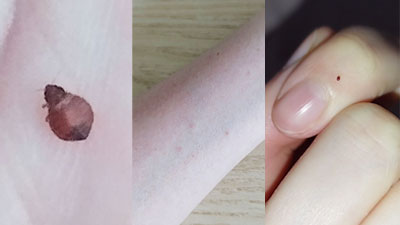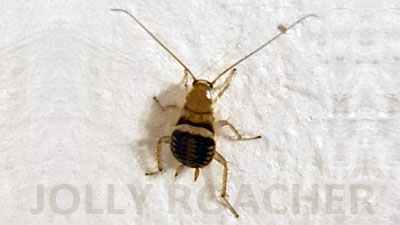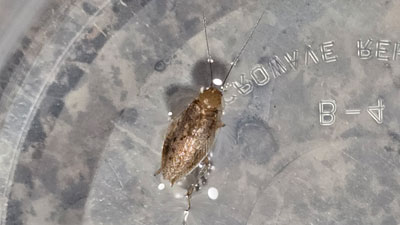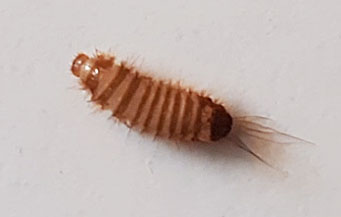Here I have collected all the photos of booklice that my viewers sent me to identify these insects and which definitely show the psocid species.
Just remind you that videos with these insects that viewers sent me in 2023 I collected in a separate video on my YouTube-channel:
Some pictures are so good that the booklice in them can be identified to species, or at least genus, with great accuracy. In the comments to such images, I indicate the presumed species and a brief history of the insect sighting from the viewer and the signs by which I identified these barklice.
All photos are minimally processed in a photo editor. Such processing may change the size and proportions of the image, remove unnecessary parts that do not actually contain insects, and slightly correct the brightness if the booklice in it are overexposed or, on the contrary, the photo is too dark. I do not correct neither the colors nor the details of the insects’ structure in the photo.
I intentionally leave the pictures as close as possible to the condition in which they were sent to me, so that you see them in the original and know what booklice look like in your home, but not in ideal images of professional photographers.
1. Very detailed photo of the booklouse
This photo was sent to me by a girl who complained that she was seeing insects all over her apartment, mostly on the walls.

They don’t jump, do not bite, but catch her eyes very often, always singly, 1-3 individuals per day. Their size is less than a millimeter, and the girl was able to take such a high-quality photo only with a macro lens.
And an important addition from the author of the photo – insects are either colorless or slightly brownish, but translucent.
In this photo, the hay beetle is distinguished by its large head with characteristic strong jaws narrowed forward, and by recognizable wings above the body. Most likely this is a species from the family Psyllipsocidae.
2. Barklouse with no noticeable pattern on its body
This barklouse was shot by a viewer who was very worried about whether these insects were dangerous for children.
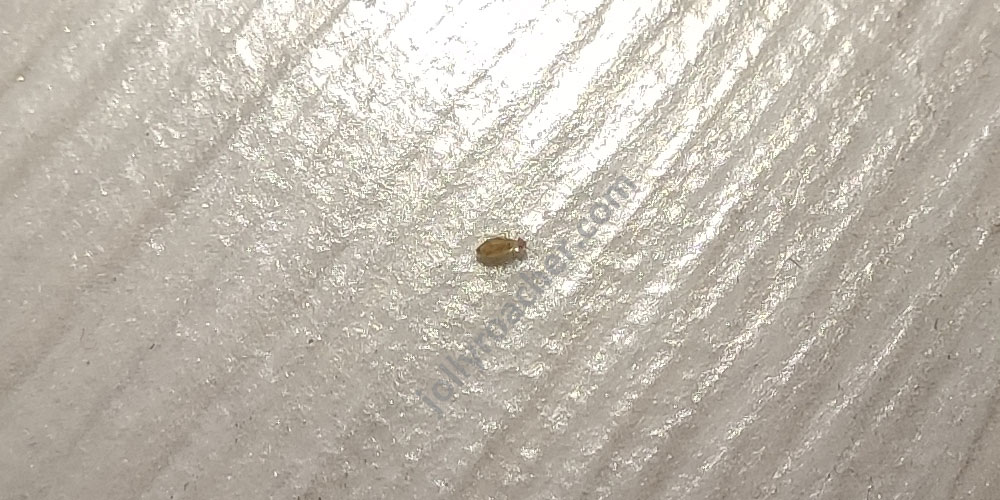
This insect has a typical booklouse body and head shape. What is atypical is that no pattern of spots is visible on the body – perhaps this is really a representative of a species whose coloring is so inexpressive, or perhaps the insect is simply overexposed in the photo.
In any case, this is a barklouse, and it does not pose any direct danger to children.
3. Typical booklice (perhaps, Liposcelis divinatorius)
This is one of those cases when it is impossible to identify an insect from a video, but as soon as the viewer sends me a photo, everything falls into place. In this photo you can recognize not just some representative of the family, but an insect that looks exactly like Liposcelis divinatorius:
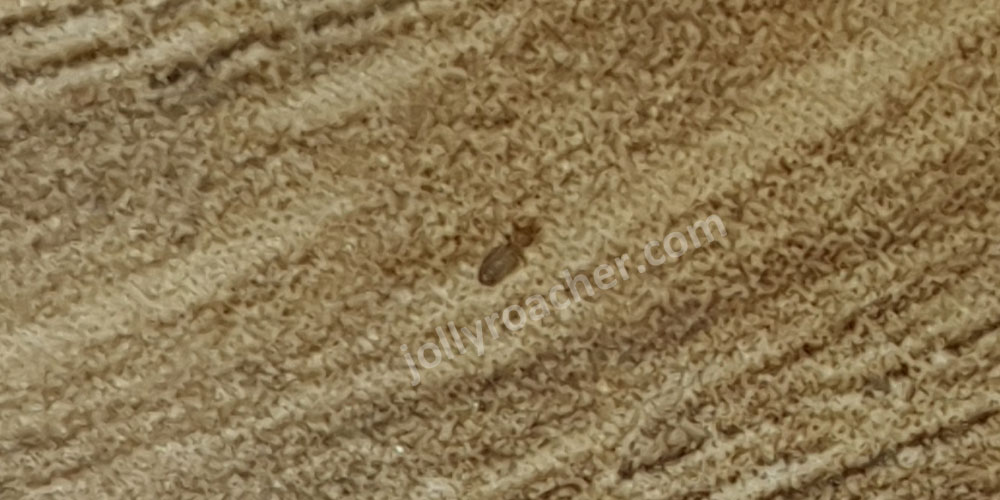
It is impossible to identify this species from a photo, but among other synanthropic species of Psocids with this body shape, Liposcelis divinatorius is the one most often found in apartments. Therefore, it is logical to assume that it is it.
By the way, look at its rather long and wide body with comparatively short legs – this is a characteristic feature of species from the family Liposcelididae.
4. Presumably Dorypteryx domestica
This photograph began the epic with booklice in new buildings — after that emails with these pests exactly from new houses rained down to my email. The girl wrote that they moved into an apartment in a new building with fresh renovations, and found these “look like book lice” insects running in the bathroom and on the windowsills:
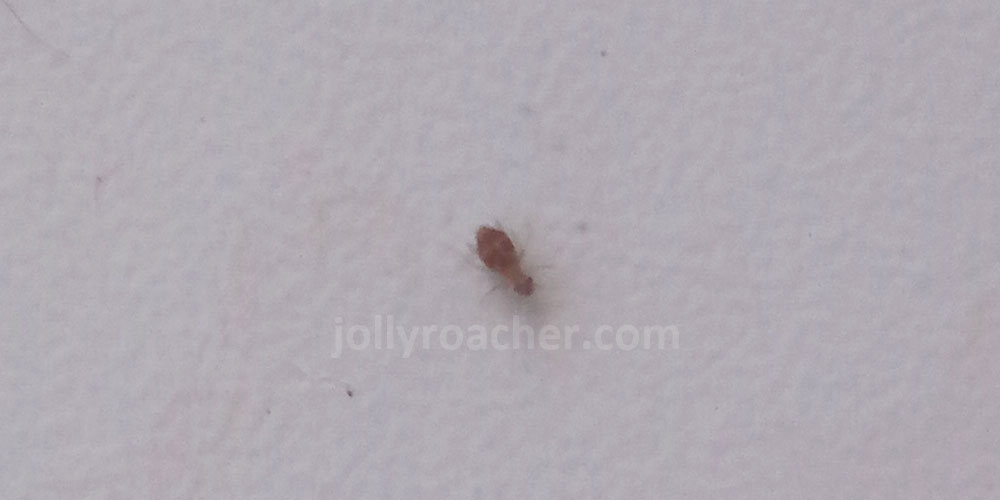
This specimen has clearly visible pinkish stripes on the body, characteristic of Dorypteryx domestica, one of the most common species of synanthropic booklice. Although it is impossible to identify precisely the species from the photo, since many related species have similar coloration, it is very likely to be Dorypteryx domestica as the most likely contender.
5. …and another one just like that
This photo is from a girl who has already watched my video, found out that it was a booklouse, but decided to clarify to be sure, caught it, put it in a jar, took a photo and sent it to me:
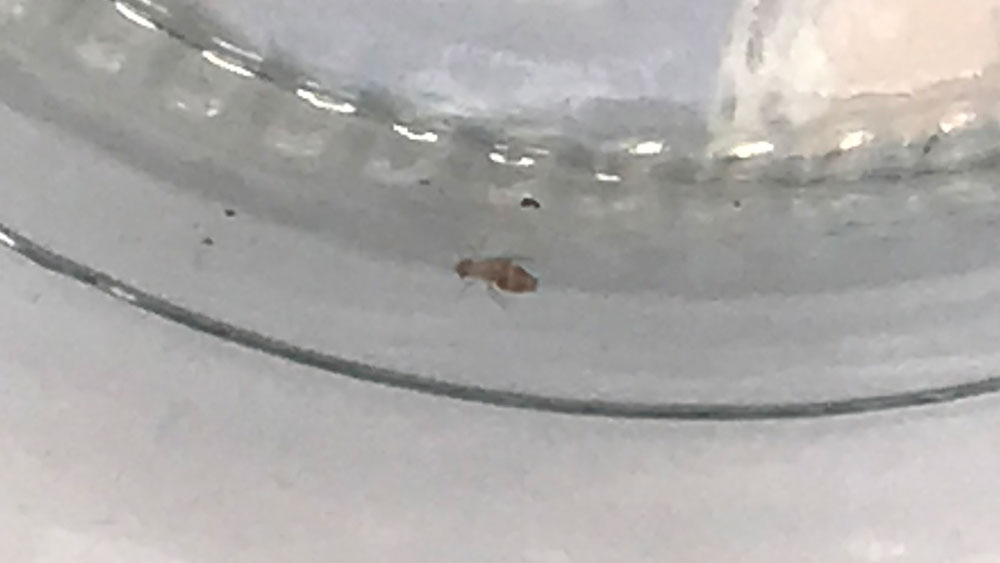
As you can see, this individual has the same coloration as the previous one. This is definitely a booklouse and almost certainly Dorypteryx domestica.
6. Another psocid from a newly built building
The author also took this photo in an apartment in a newly built house:
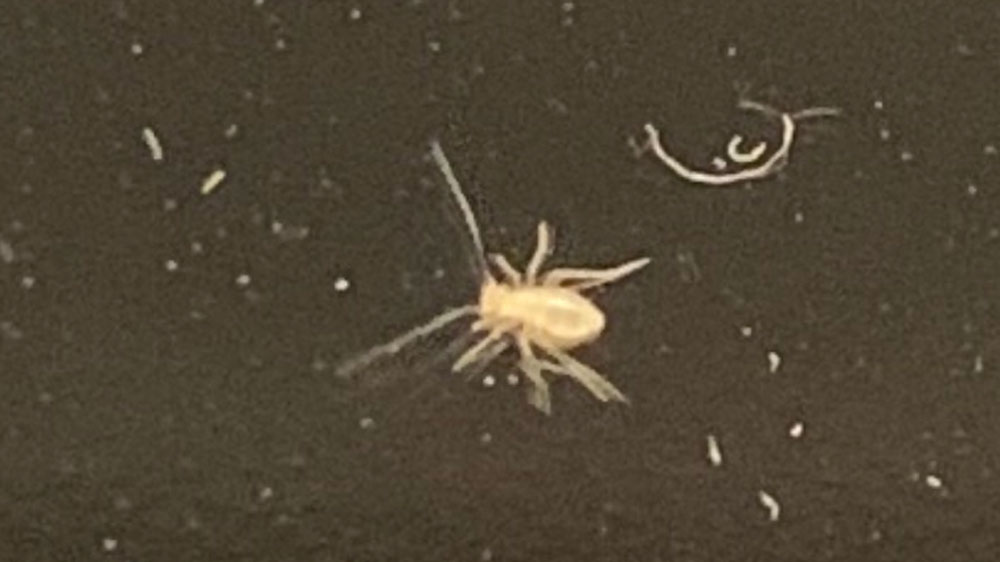
According to his description, the apartment in the new building has just been renovated, no one lives in it yet and there are not even indoor plants. But every time he visits the apartment, he finds such insects in the kitchen. The author immediately suspected that it was a hay beetle, but he also decided to clarify this and sent me a photo. The author immediately suspected that this is a “bark lice”, but also decided to clarify it and sent me a photo.
Here, as you can see, the insect is overexposed and the coloration of the body is not visible. But belonging to the psocids can be determined by the shape of the body – by the characteristic massive head and teardrop-shaped abdomen.
7-8. Possibly Dorypteryx domestica again
The author of the photos initially mistook this booklouse for a cockroach nymph, but I convinced him that it was an insect from the genus Dorypteryx – either Dorypteryx domestica, or Dorypteryx longipennis.
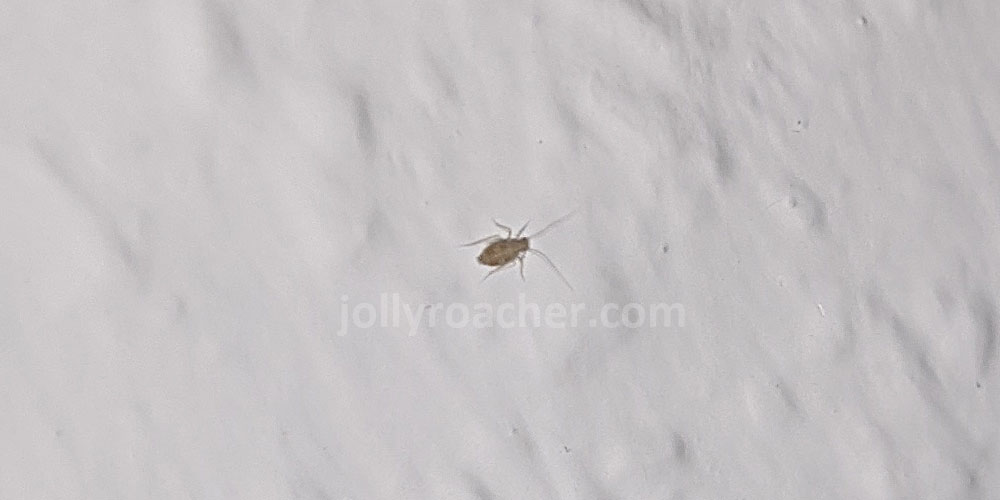
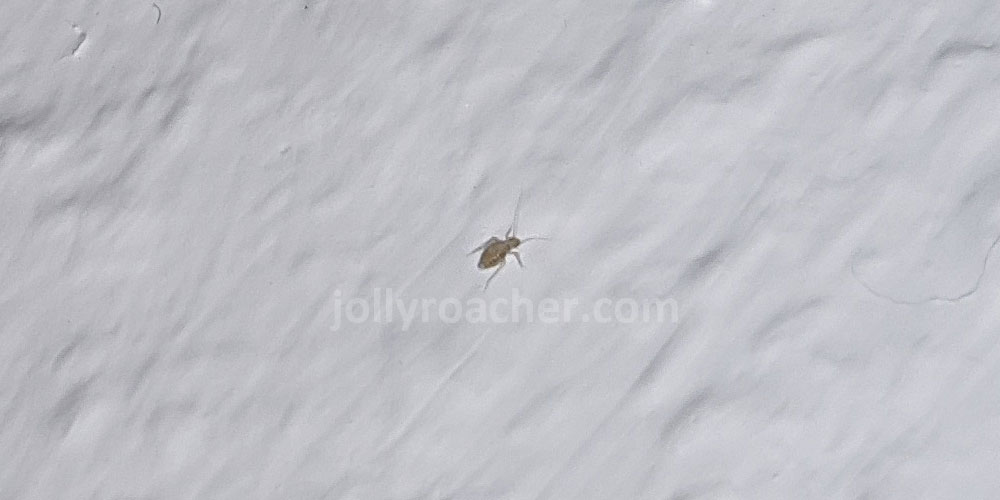
They were also found when people moved into an apartment in a newly built building. In such newly built buildings there are many damp places, wet building materials and surfaces, that are very attractive to psocids. Not surprisingly, that in many such apartments booklice live even before windows and a normal interior appear here, and then these same insects meet people who move into and sincerely consider the apartment their property…
9. Another Liposcelis divinatorius
The photo does not show the details of the insect’s morphology very well, and it was possible to identify it only from the video. Just note the size of the booklouse: the round holes, one of which it fits into entirely, are dents on the surface of a paper towel…
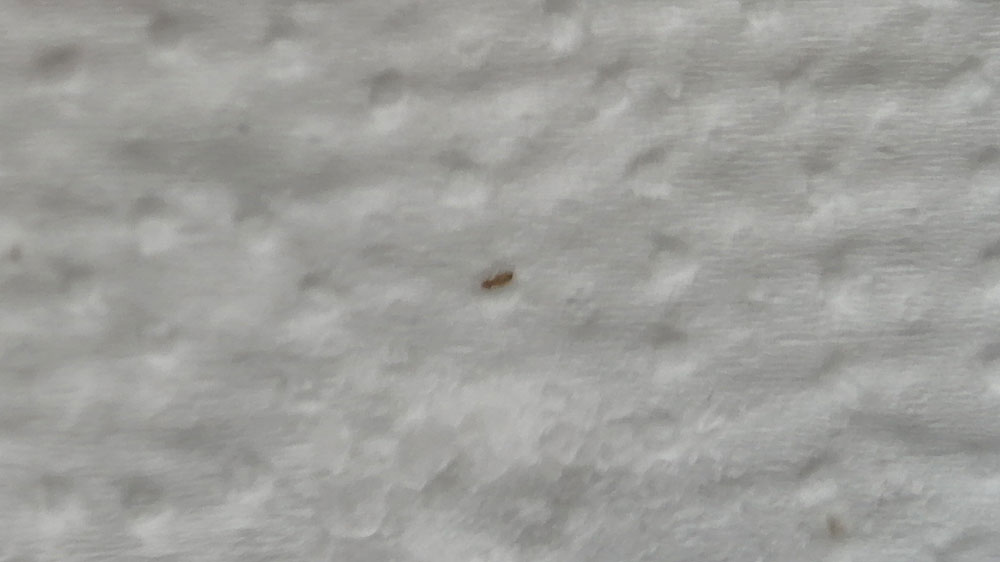
In body shape and coloration, this booklouse looks like Liposcelis divinatorius. The girl who sent me the photo wrote that she found them “first in a container with flour, then in the cupboard where the cereals are, and now one or two are running through where the dishes are…”
10-11. Booklice from under the refrigerator
The girl found these insects under the refrigerator, photographed one of them and sent it to a disinfector friend. He suggested that it was a young cockroach. However, we already know that this is obviously a booklice from the family Psyllipsocidae, which also includes the genus Dorypteryx.
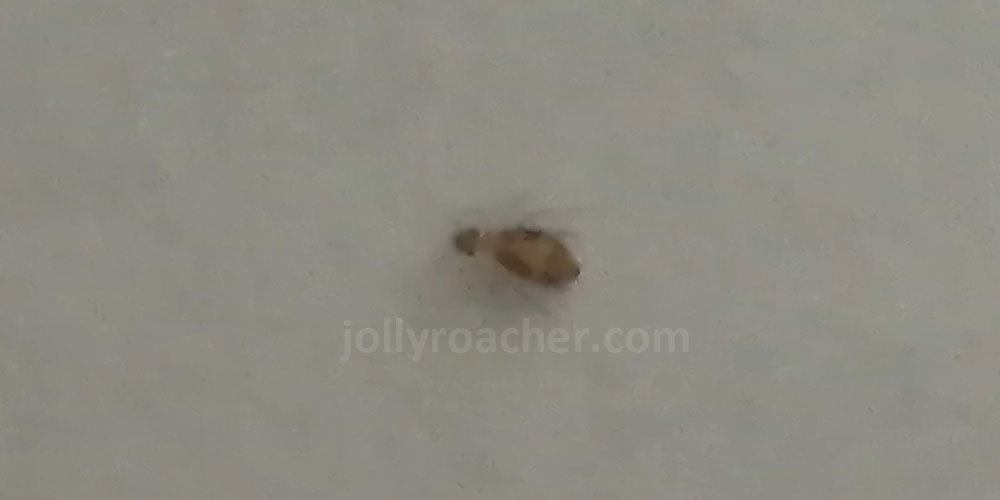
If you look closely, you can even see translucent narrow wings on the body of this insect.

It is interesting that in the video these insects also jump away when someone tries to touch them – this is one of the important signs of psocids.
12-16. Excellent macro photos of booklouse
These are some of the highest quality and clearest photos of barklice that have been sent to me. The girl saw this insect on the table and noticed that it moved jerkily and even jumped a bit.
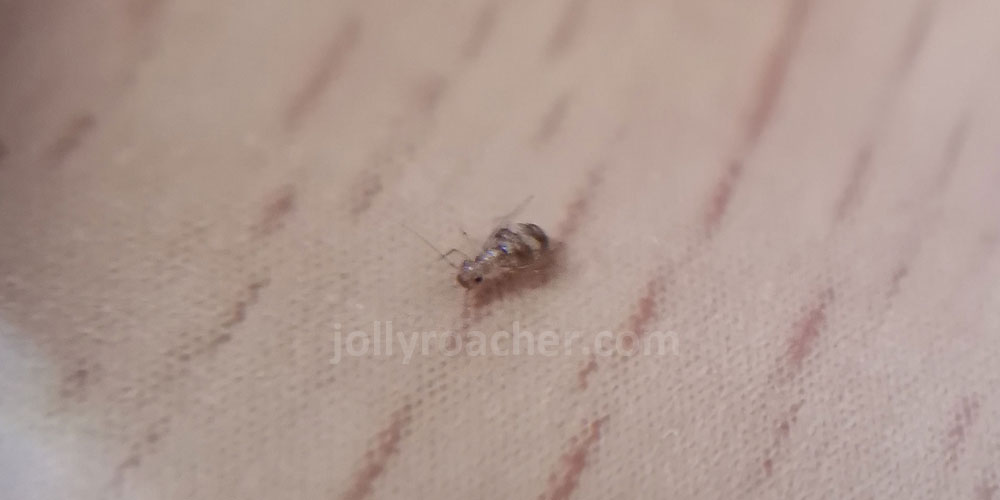
Most likely, the girl shot the insect using a professional camera in macro mode. Theoretically, it is possible to photograph the insect in this way using a smartphone with a high-quality camera, but in this case a lot depends on the skill of the photographer.
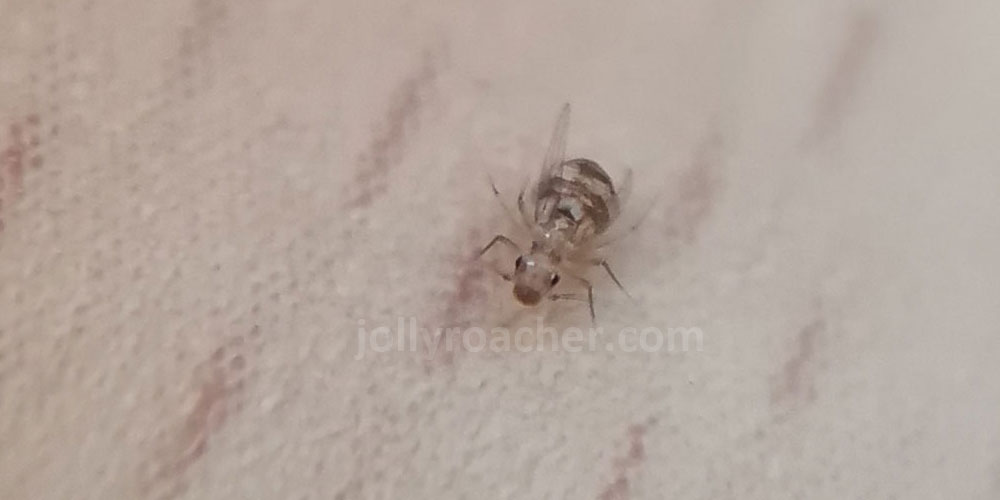
This barklouse is also looks like Dorypteryx domestica. But as practice shows, it is never necessary to identify synanthropic insects (especially psocids) with exactness up to species: they all lead a similar way of life and therefore understanding what genus and even family they belong to is enough to get an idea of their harmfulness, or vice versa, innocuousness.
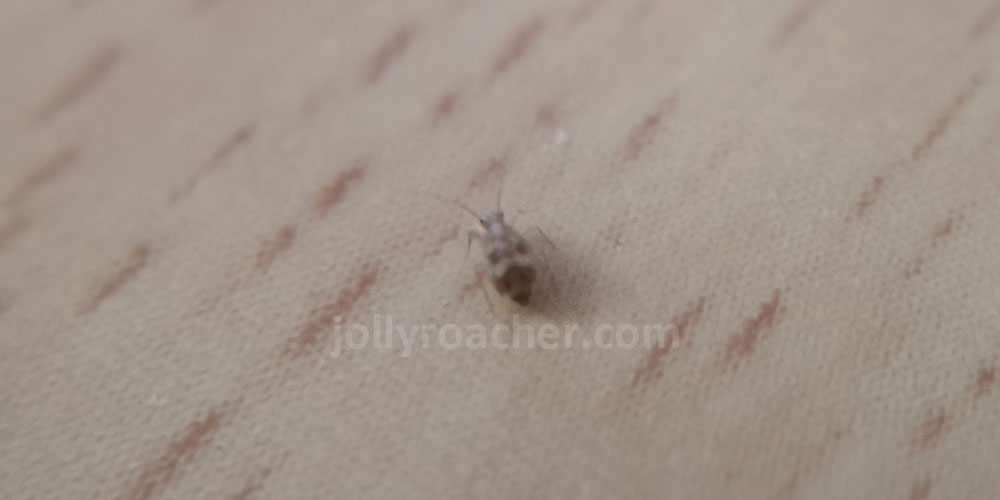
Even when viewed from behind, the insect’s eyes are clearly visible. This, by the way, is also an important diagnostic sign – the eyes of booklice are better visible than those of cockroaches, beetles, and even more so fleas.
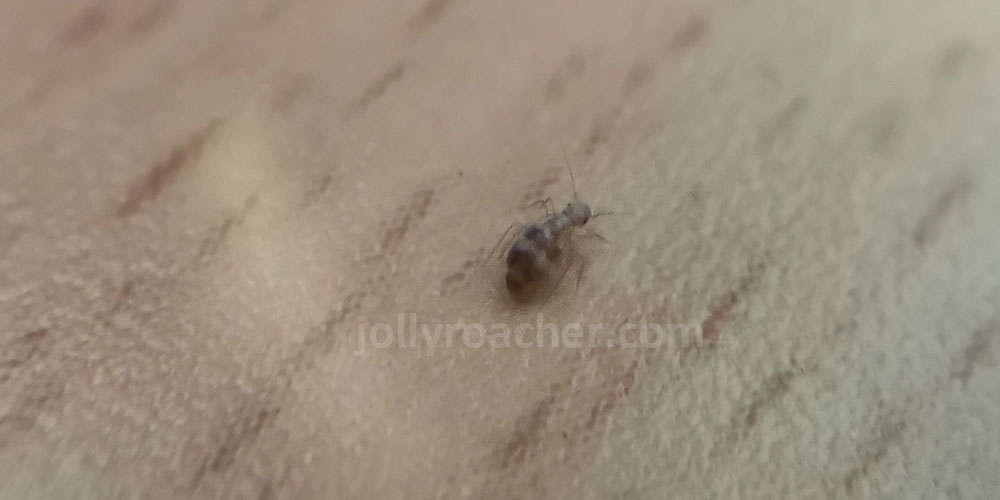
Photo 15. The eyes of this booklouse and most of its relatives are black and contrastingly stand out against the background of light-colored head
Of the synanthropic insects, only booklice, fleas, crickets and springtails can make obvious jumps. They all differ well in appearance and it is impossible to confuse them by examining the insect as it is seen in this photo.
And the last photo shows booklouse next to a toothpick for size estimation:
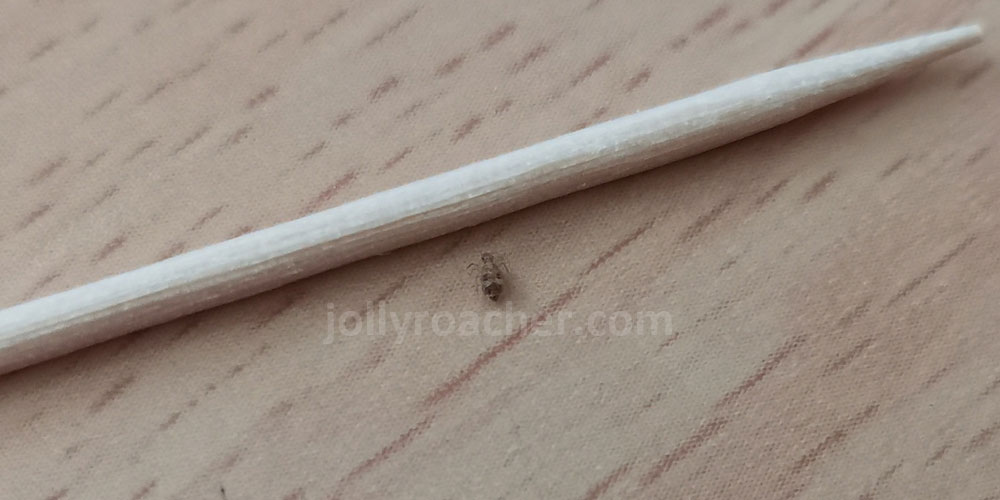
Not surprisingly, many people cannot examine such small insects in detail with the naked eye, and therefore cannot correctly identify them.
17. Booklouse with huge eyes – Cerobasis guestfalica
The author of this photo found such booklice in the new apartment he moved to. These insects are visually similar to larger pale booklouse Trogium pulsatorium, but differ from them by a shorter body and, most importantly, very large eyes. Look at how big they are:
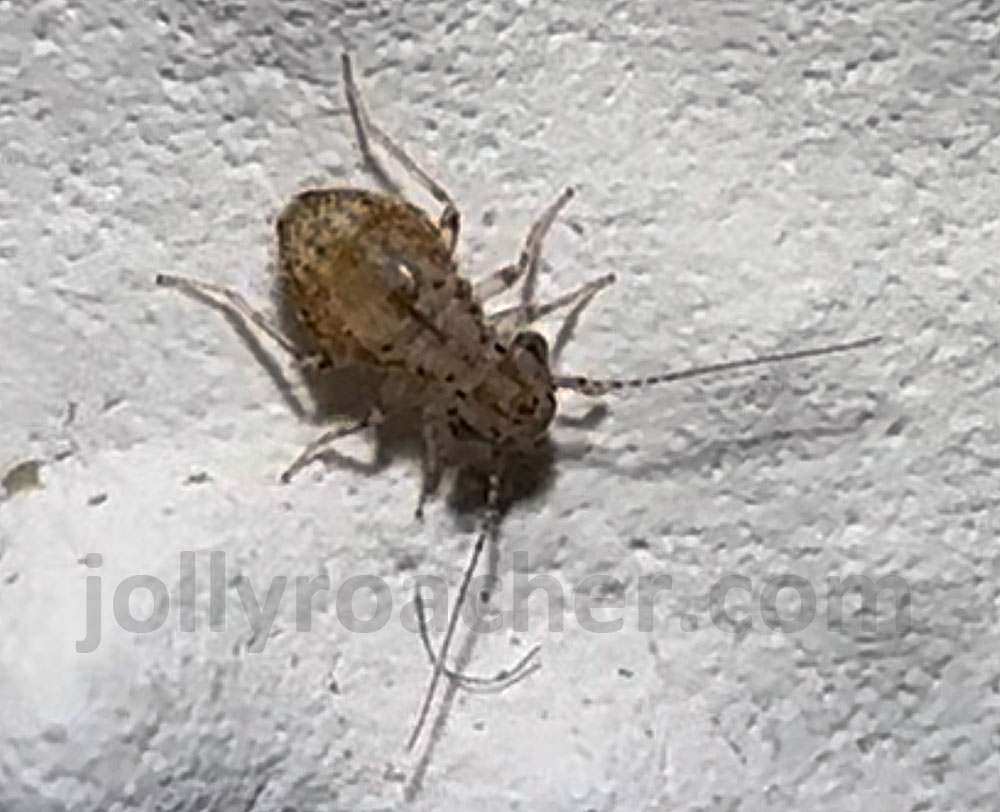
Such large eyes are a sign of a members of the genus Cerobasis. All of its species have large eyes, and many are quite similar in appearance. However, one of the most common and widespread throughout the world is Cerobasis guestfalica. Therefore, for lack of an opportunity to accurately identify it by microscopic morphological characteristics, we will assume that this is Cerobasis guestfalica.
This booklouse, by the way, is slightly larger than ordinary synanthropic psocids. Such an individual is usually about 1.5 mm long.
18. Black barklice
If you look closely, you can see that these insects are not black, but dark brown, but due to their tiny size, they appear almost black, especially on light-colored surfaces:
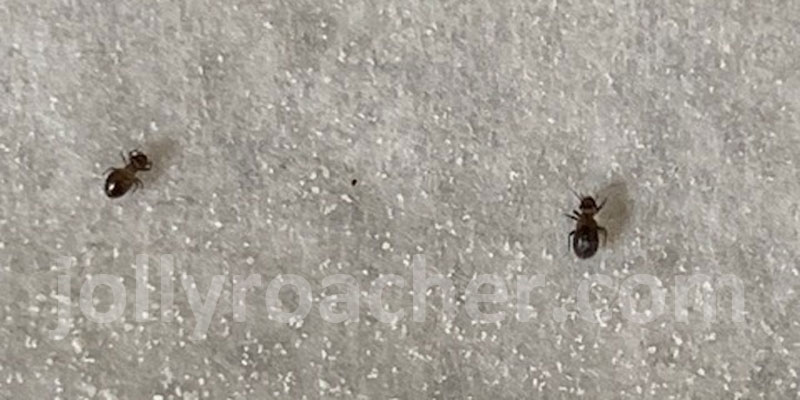
These are almost certainly Lepinotus patruelis, a booklice that breeds en masse in food stores and warehouses in many northern European countries.
These guys are notable for the fact that when mating, males and females behave in an atypical way for insects: females chase males and try to mate with them, whereas males choose which of the females to share their seminal stock with.
So, if you find such insects in your home, then know – these are booklice. They do not bite anyone and are relatively safe for people and pets.
However, like any other invertebrates, they can cause allergies in people sensitive to chitin and insect excrement, and they can also spoil food, at least by contaminating it with their feces.
Therefore, if you find such lodgers in the kitchen, and even more so – among the cereal stocks, try to get them out as soon as possible.
And if the insects in your home do not look like the individuals from these photos, or you are not sure of your selfmade identification, then take a pictures of them and send them to my mail – I will try to find out what you unwittingly sheltered near you.
If this post helped you, you can support the project with a donation. This will help me publish even more photos and videos for identifying arthropods.



